Click here and press the right key for the next slide (or swipe left)
also ...
Press the left key to go backwards (or swipe right)
Press n to toggle whether notes are shown (or add '?notes' to the url before the #)
Press m or double tap to slide thumbnails (menu)
Press ? at any time to show the keyboard shortcuts
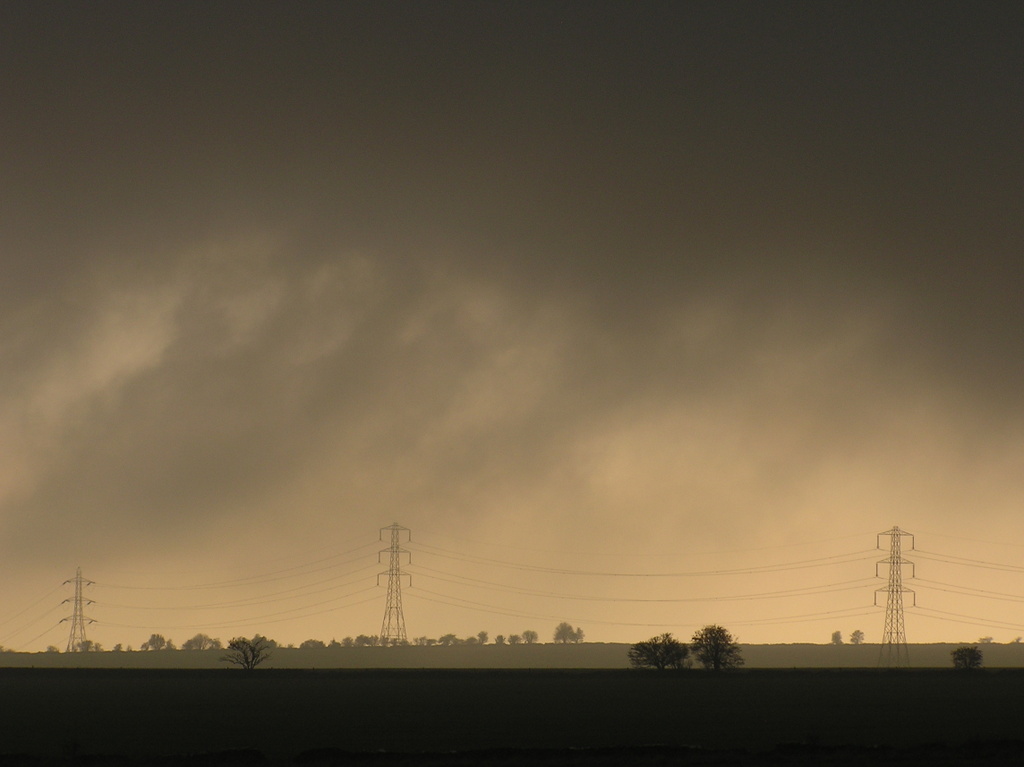
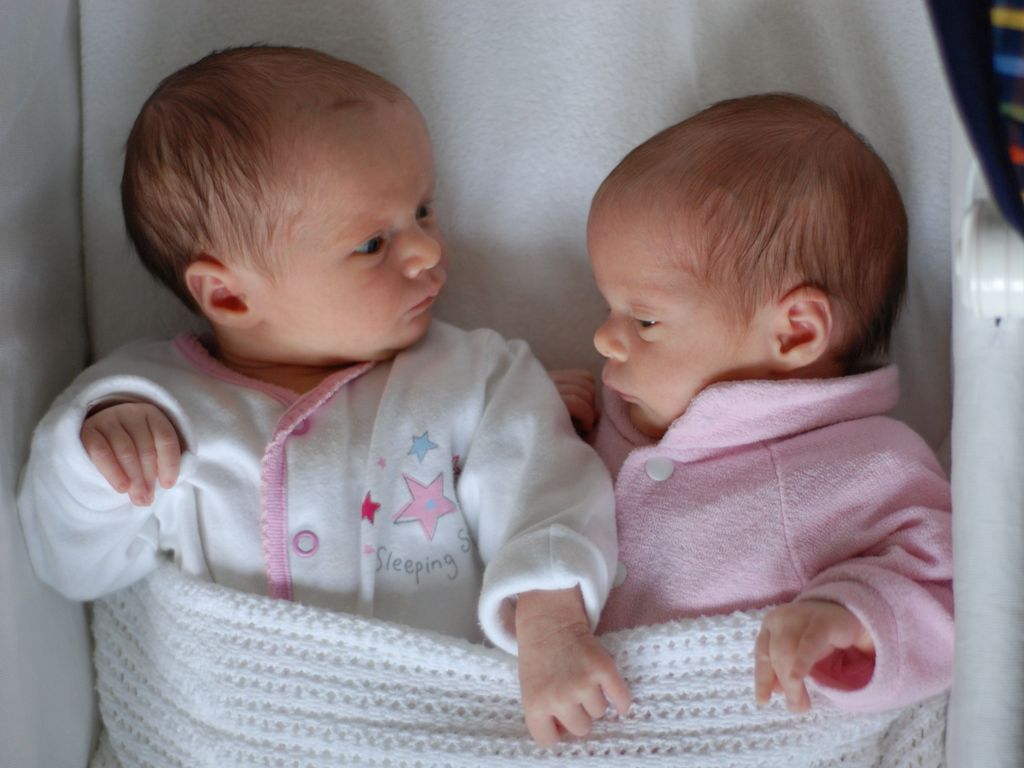
Origins of Mind : 08
the question
- (Something like) core knowledge exists.
- There is a gap between core knowledge and knowledge knowledge.
- Crossing the gap involves social interactions, perhaps involving words.
- (Something like) core knowledge exists.
- There is a gap between core knowledge and knowledge knowledge.
- Crossing the gap involves social interactions, perhaps involving words.
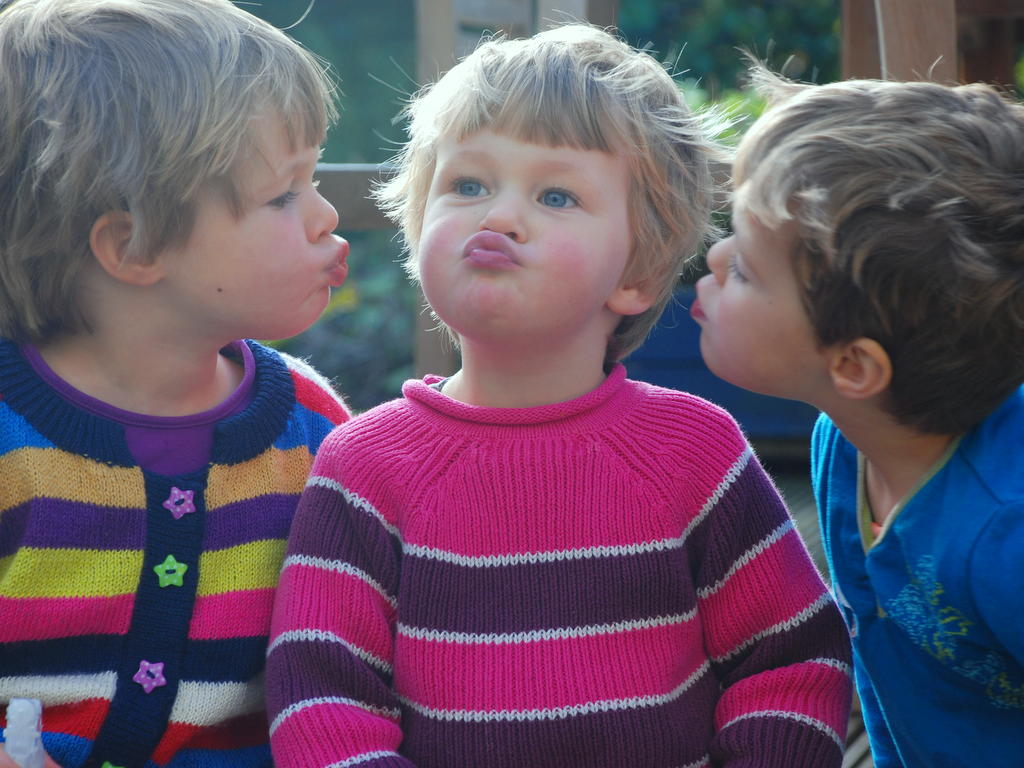
Action: When?
When?
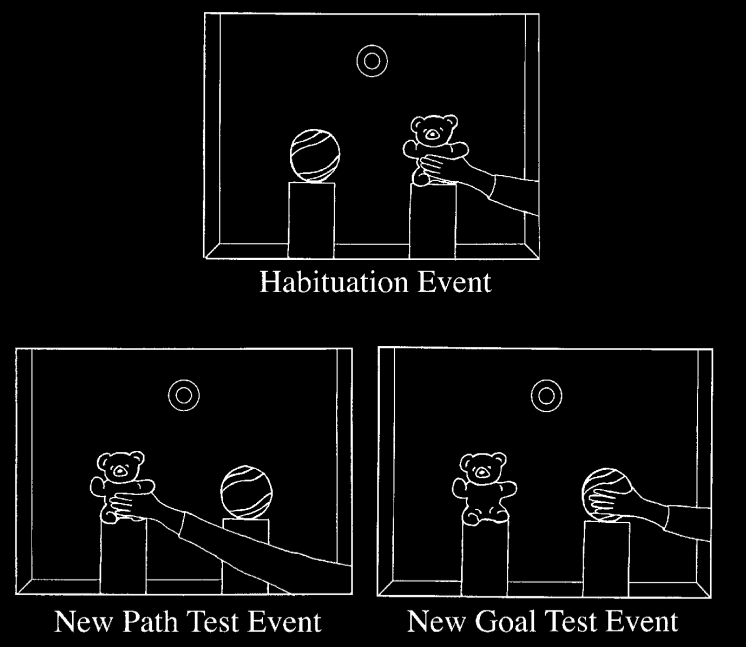
Woodward et al 2001, figure 1
When? From three nine months of age.
... or maybe not
goal vs target
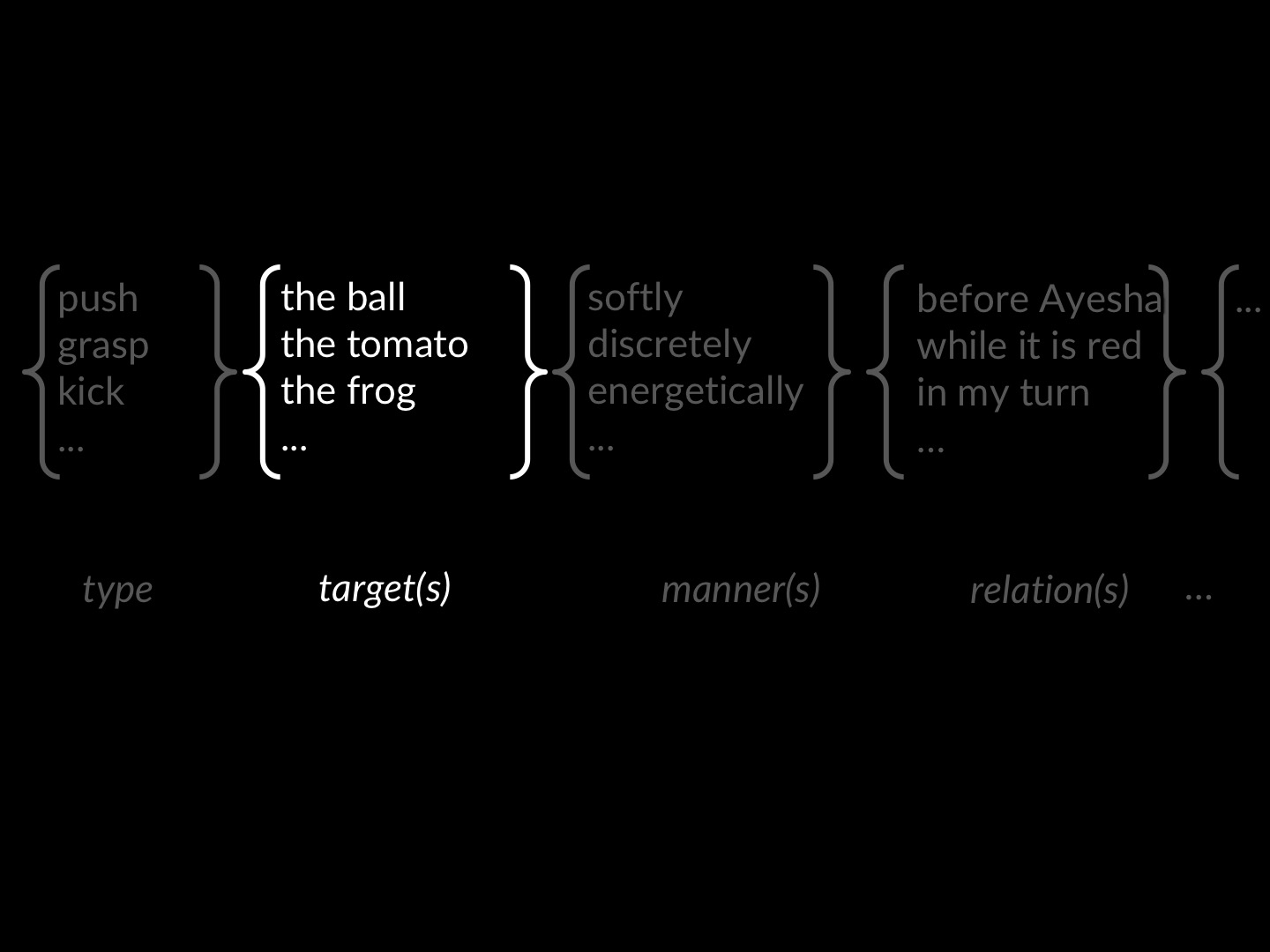
anatomy of a goal
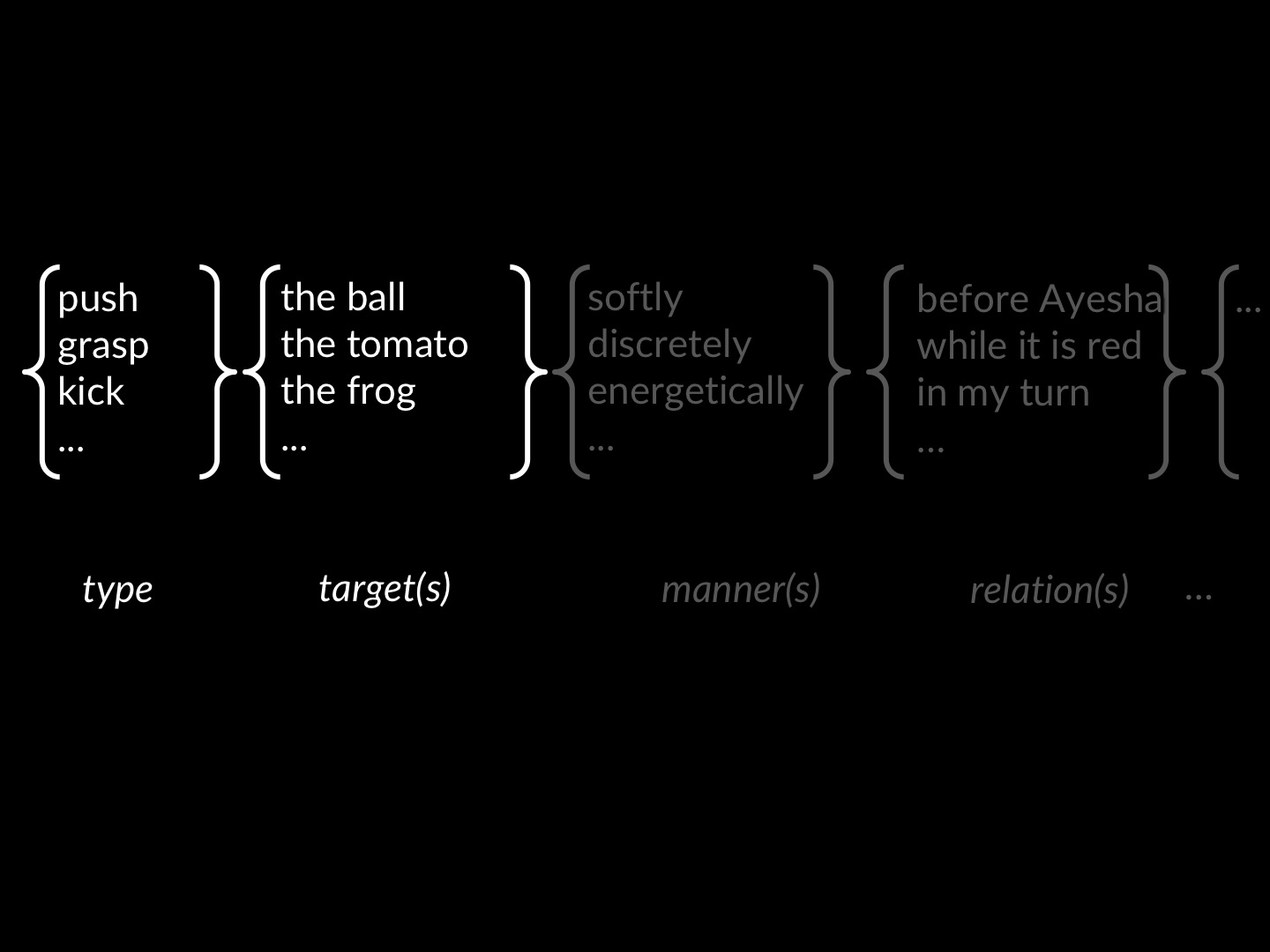
anatomy of a goal
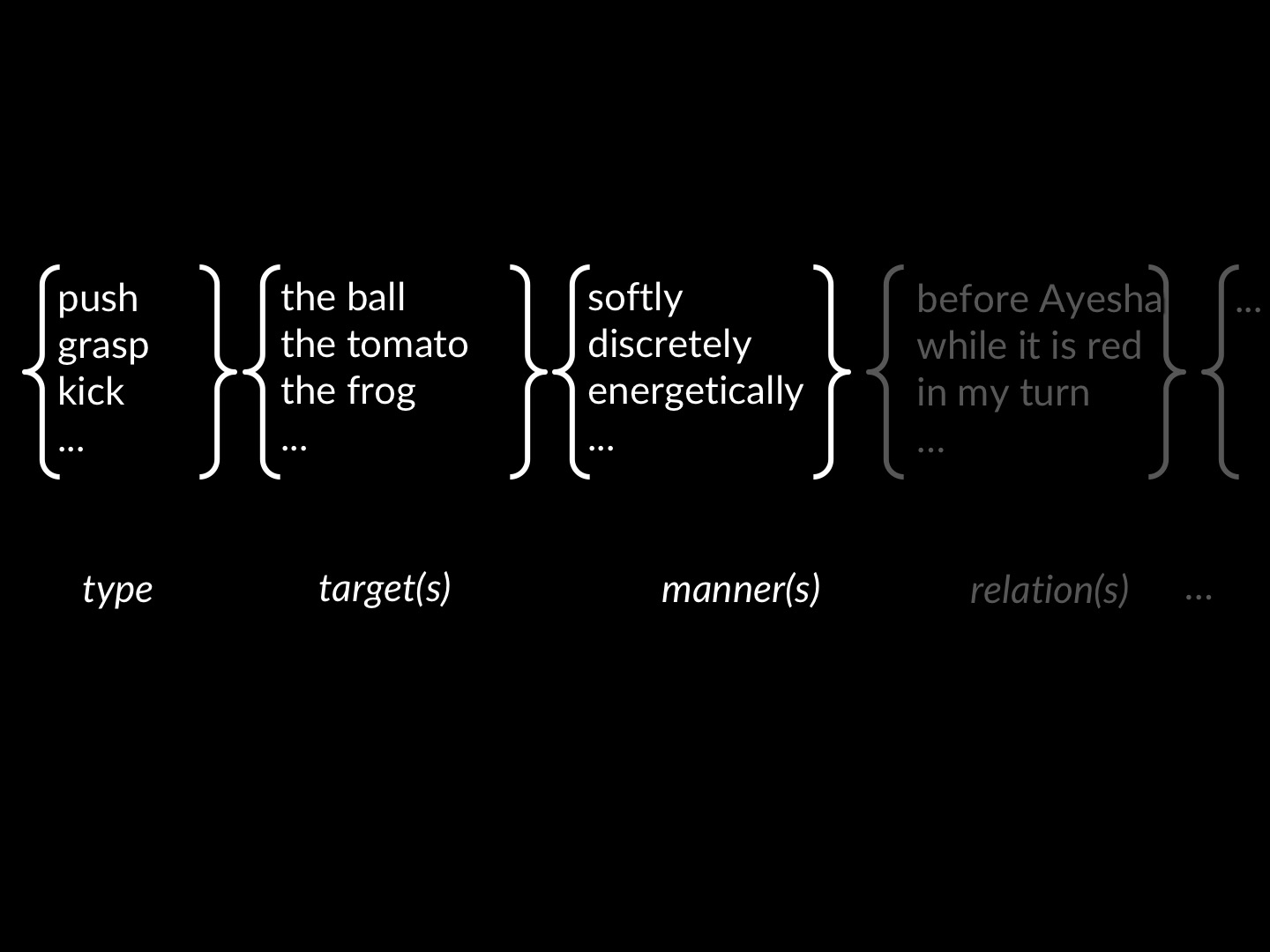
anatomy of a goal
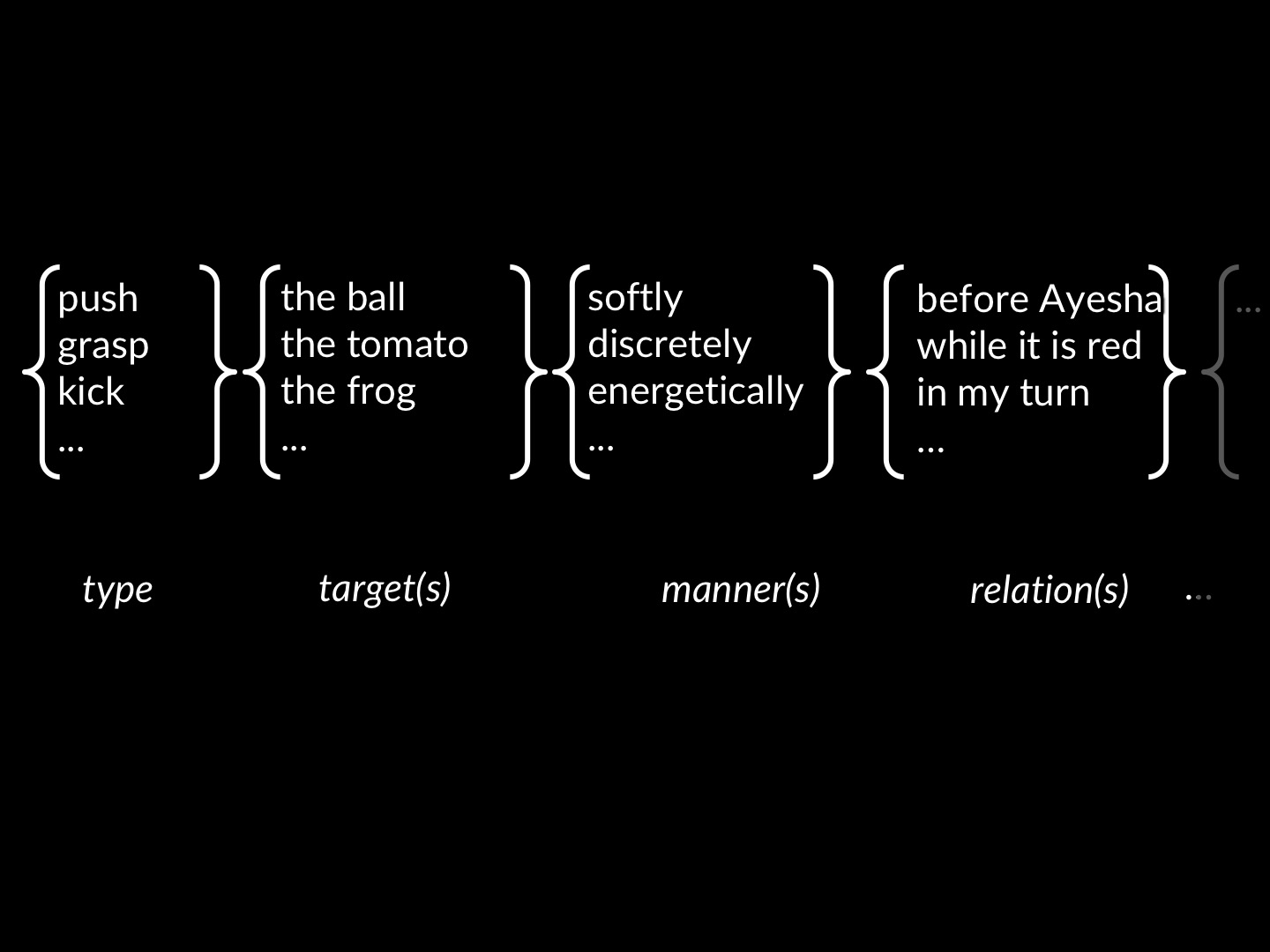
anatomy of a goal
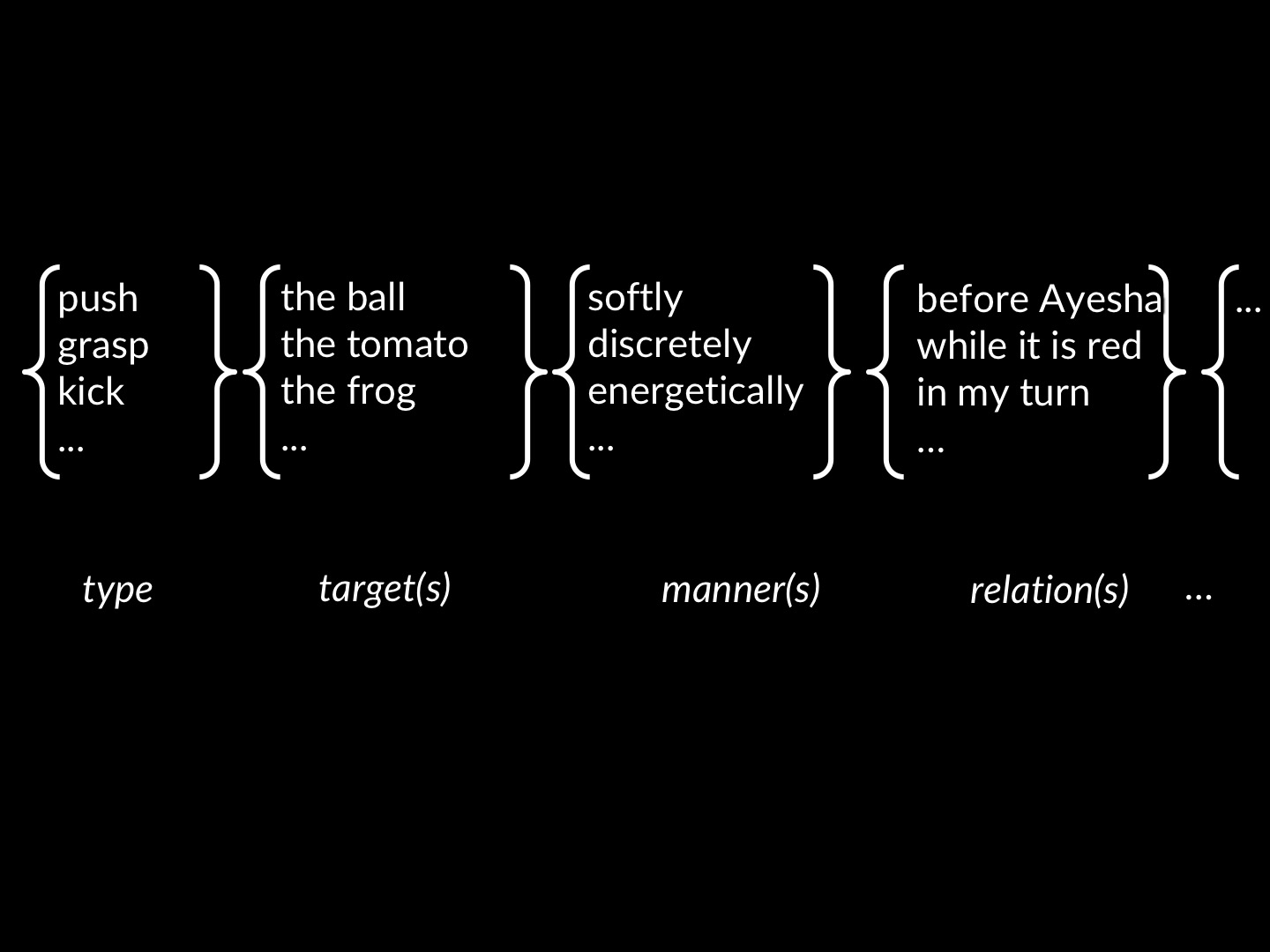
anatomy of a goal
Are infants under 10 months of age merely tracking targets?
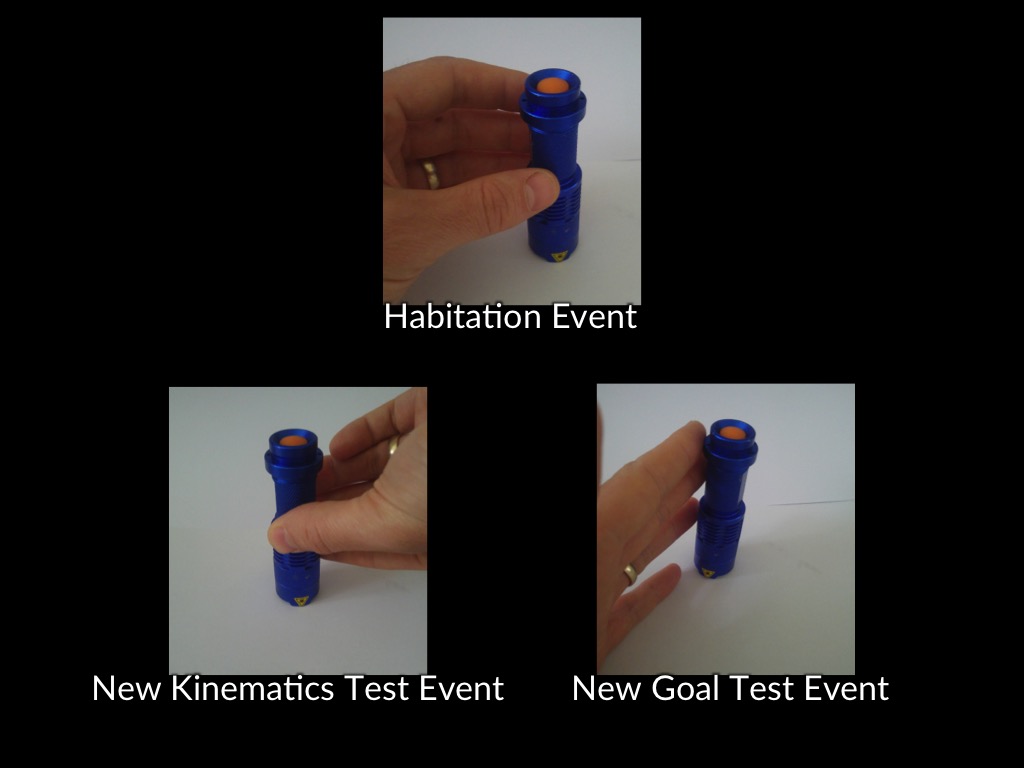
Evidence from infants in the first nine months
| age (mnths) | target varies | type varies | manner varies | |
| Woodward et al, 2001 | 6 & 9 | ✓ | x | x |
| Behne et al, 2005 | 9 | x | ✓ | x |
| Ambrosini et al, 2013 | 6 & 9 | ✓ | ✓ | x |
How?
Infants can track goals from nine months of age (or earlier).
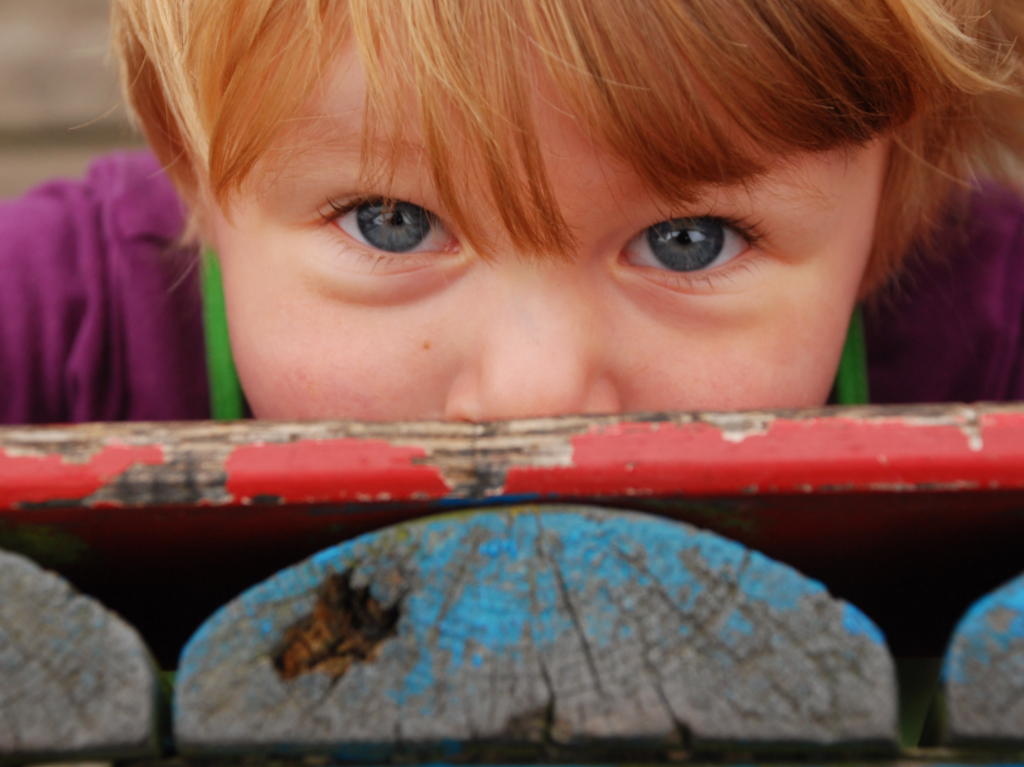
The Teleological Stance
How?
Infants can identify goals from around six months of age.
1. models (How are goals and actions related from the point of view of a 9-month-old?)
2. processes (What links the model to the infant?)
first specify the problem to be solved: goal ascription
The ‘Teleological Stance’
~ The goals of an action are those outcomes which the means is a best available way of bringing about.
Csibra & Gergely
Planning
1. This outcome, G, is the goal (specification)
2. Means M is a best available* way of bringing G about
3. ∴ adopt means M
Tracking
1. This means, M, has been adopted (observation)
2. G is an outcome such that: M is a best available* way of bringing G about
3. ∴ G is a goal of the observed action
1. models (How are goals and actions related from the point of view of a 9-month-old?)
2. processes (What links the model to the infant?)
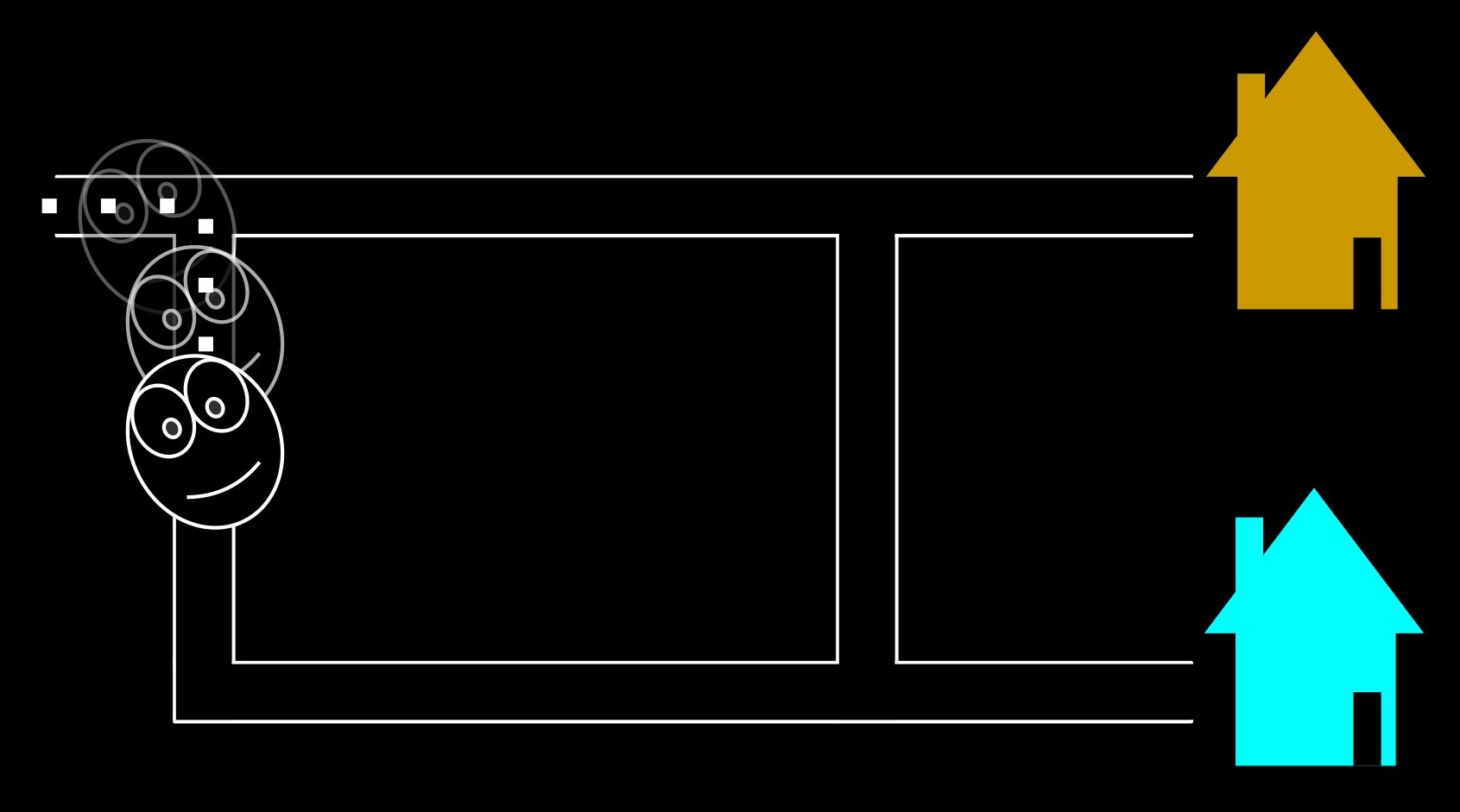
The Simple View
Infants' (and adults') goal tracking depends on beliefs concerning relations holding quite generally between means and goals;
and they identify particular goals by making inferences from these beliefs plus their observations.
How?
Infants can identify goals from around six months of age.
1. models (How are goals and actions related from the point of view of a 9-month-old?)
2. processes (What links the model to the infant?)
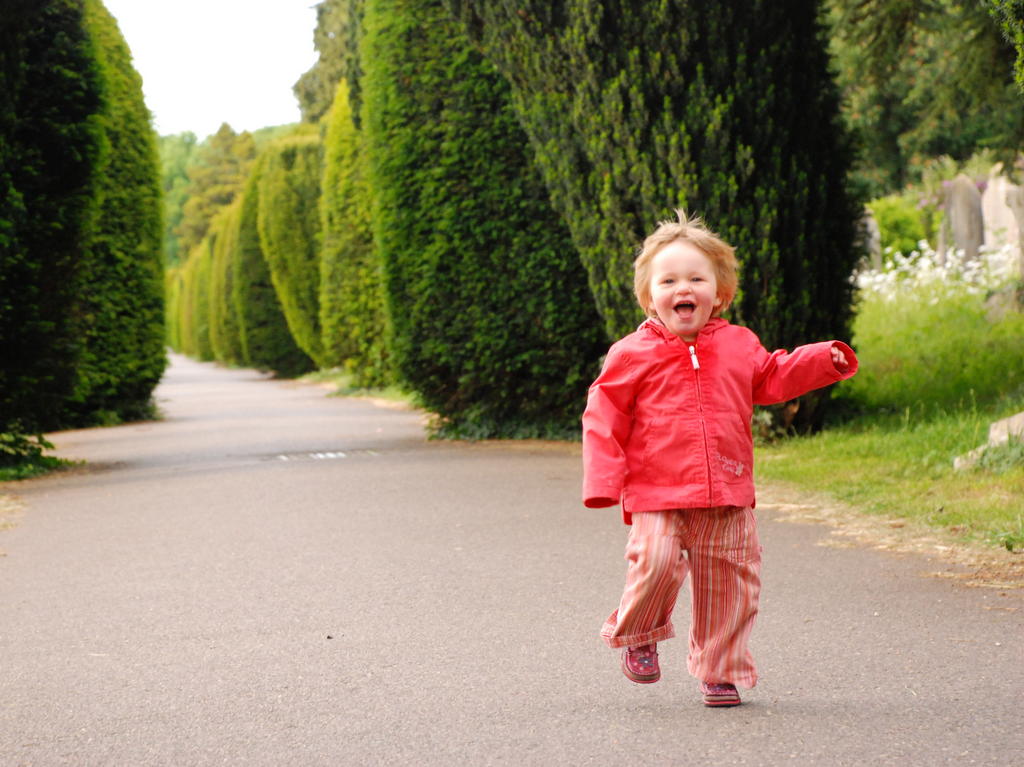
A Limit on Goal Tracking in the First Nine Months
limit:
infants in their first nine months of life
can only track the goals of an action
if they can perform a similar enough action
around the time the action occurs.

Flanagan and Johansson, 2003 figure 1 (part)
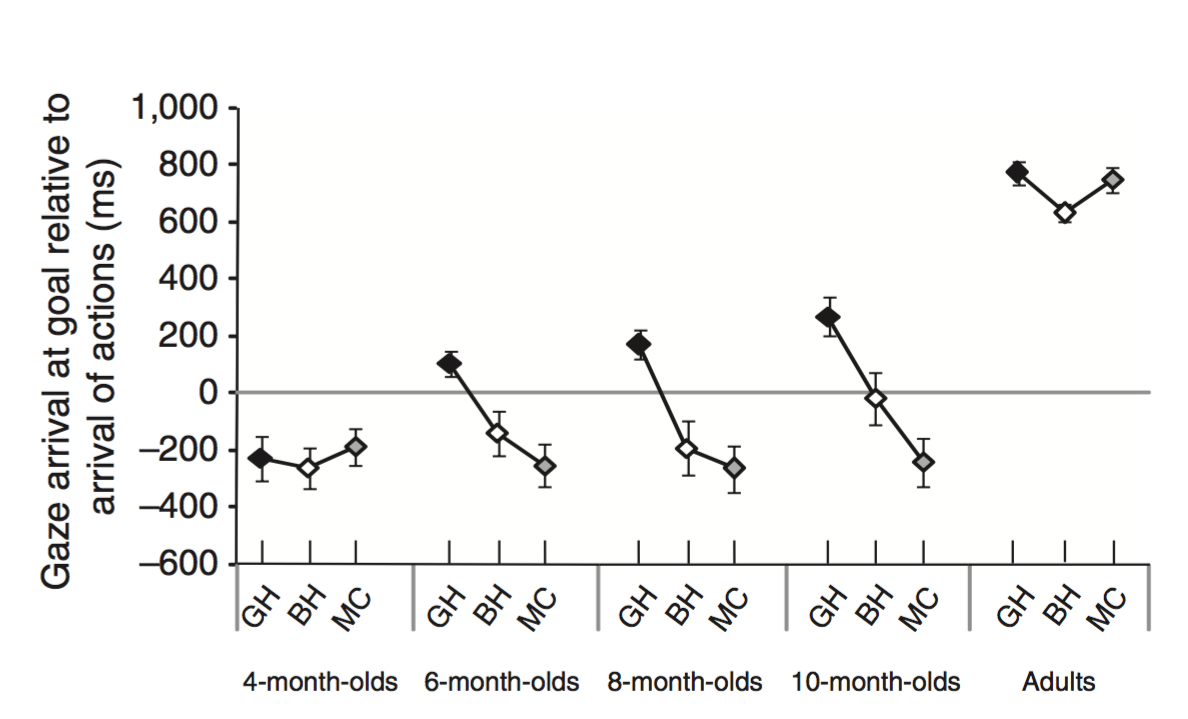
Kanakogi and Itakura, 2011 figure 1
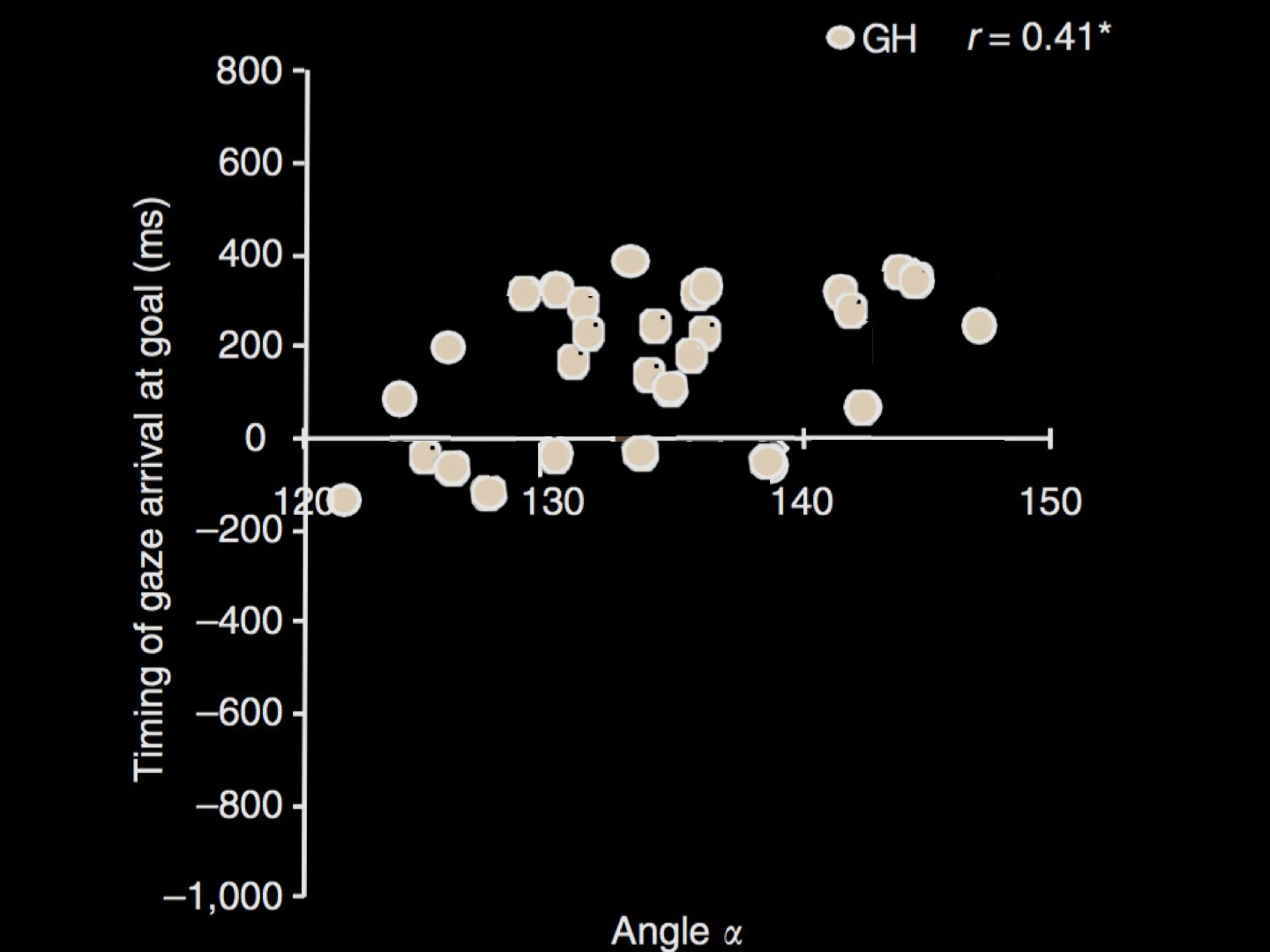
Kanakogi and Itakura, 2011 figure 5 (part)
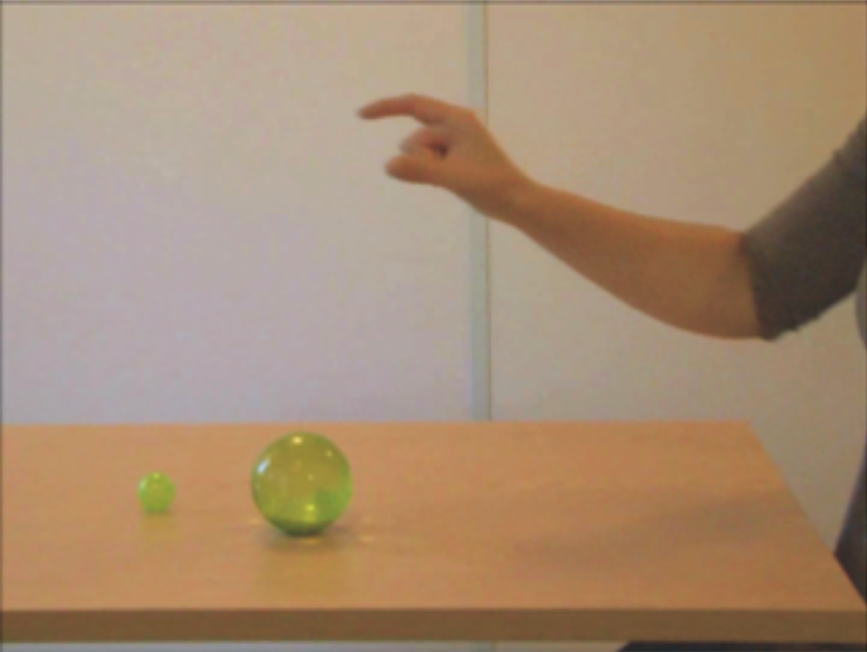
Ambrosini et al, 2013 figure 1 (part)

Ambrosini et al, 2013 figure 1 (part)
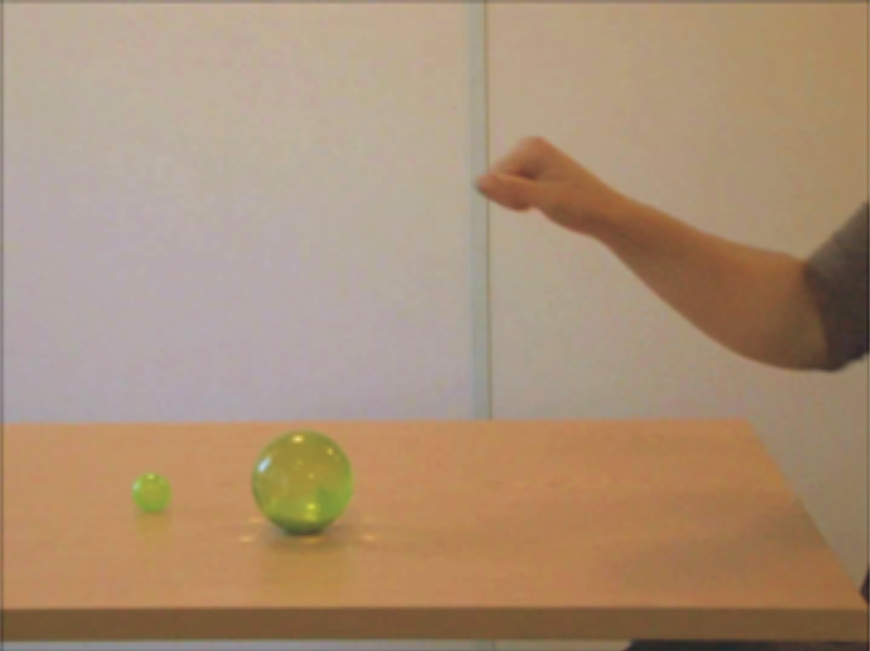
Ambrosini et al, 2013 figure 1 (part)
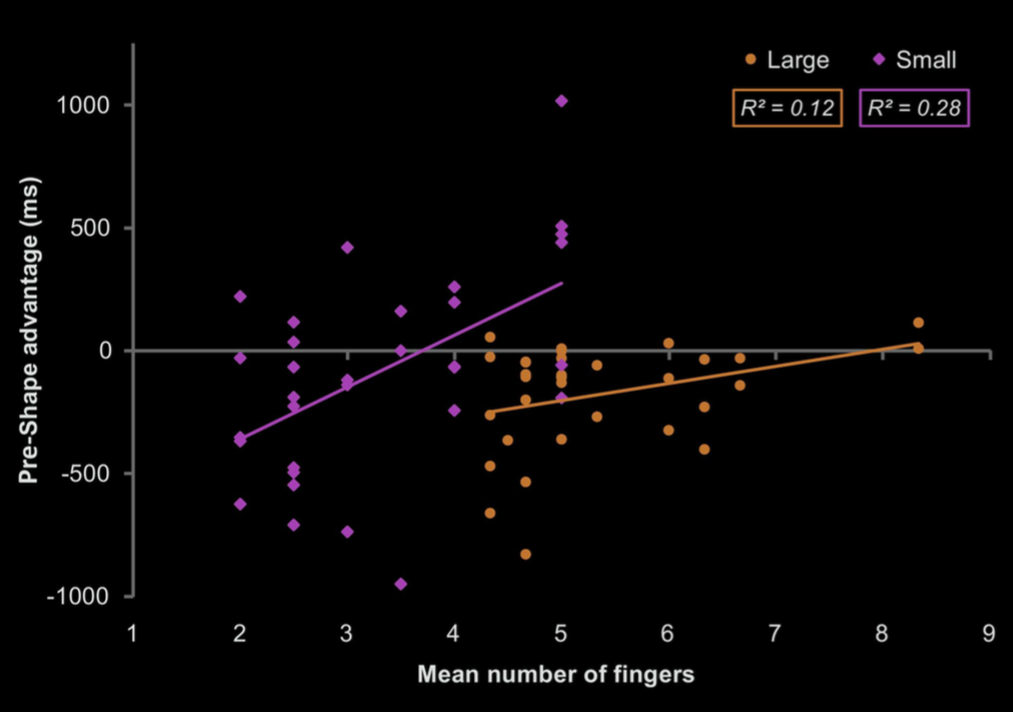
Ambrosini et al, 2013 figure 3
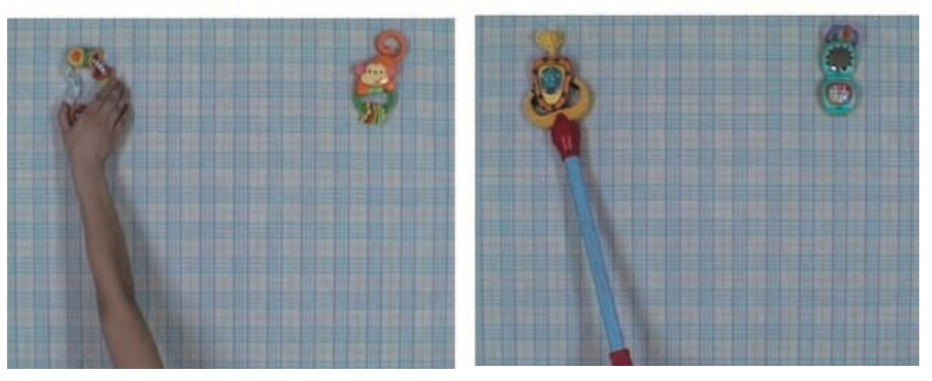
Kanakogi and Itakura, 2011 figure 1C (part)
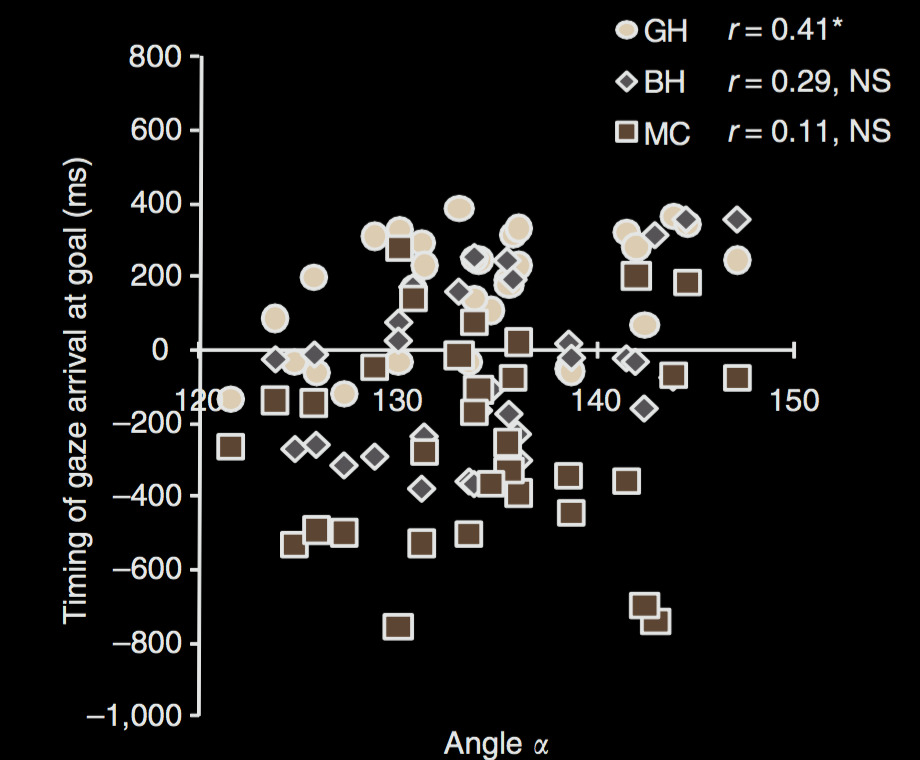
Kanakogi and Itakura, 2011 figure 5
If infants can only track goals of actions they can perform, what happens if you intervene on their abilities to act?
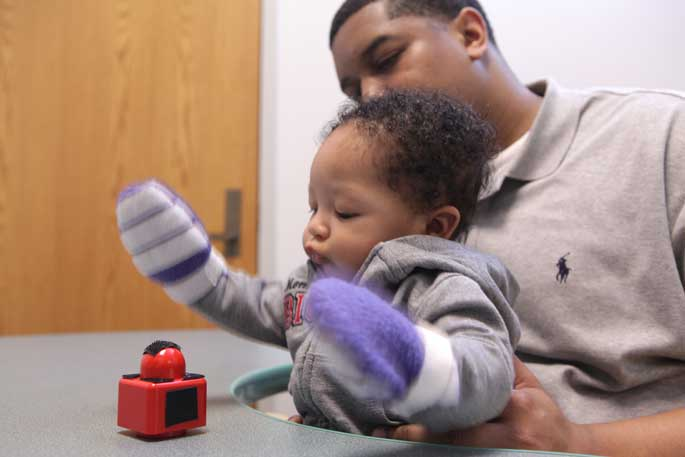
Needham et al, 2002 / https://news.vanderbilt.edu/files/sticky-mittens.jpg
Sommerville, Woodward and Needham, 2005
Play wearing mittens then observe action.
vs
Observe action then play wearing mittens.

Woodward et al 2001, figure 1
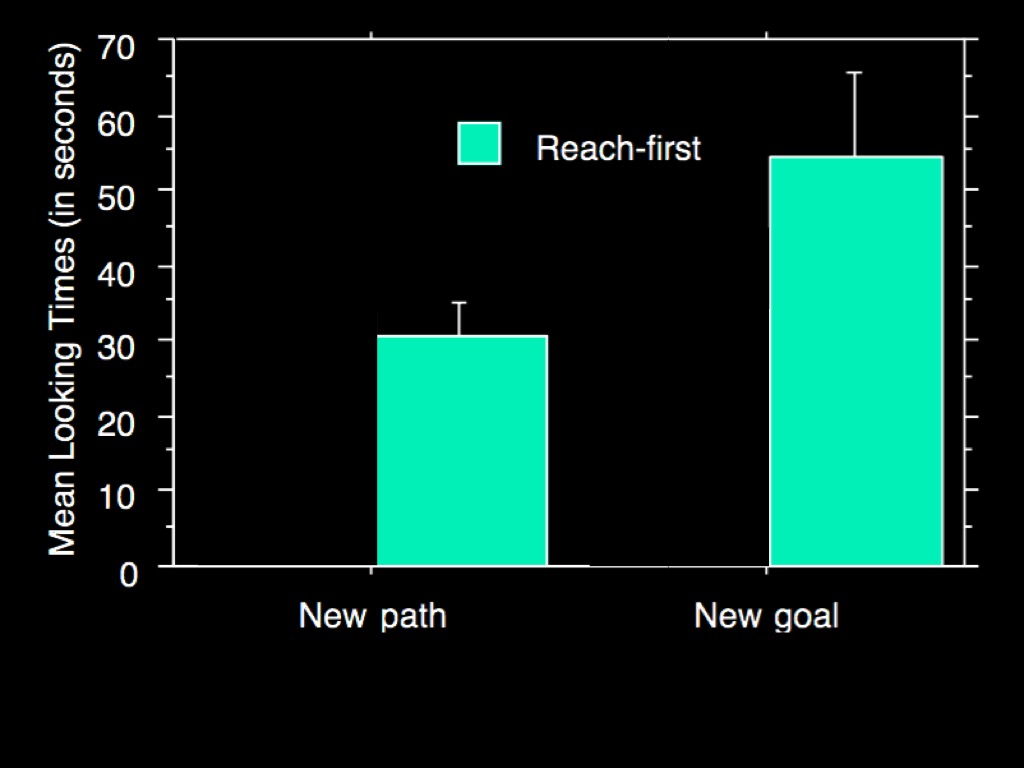
Sommerville, Woodward and Needham, 2005 figure 3
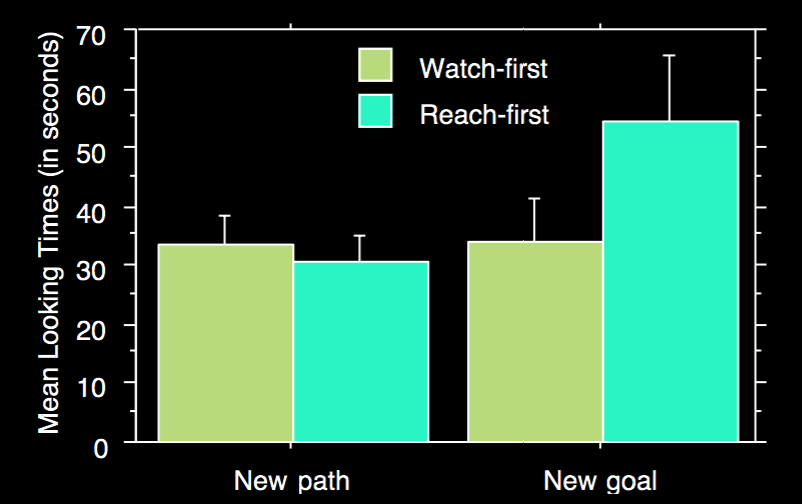
Sommerville, Woodward and Needham, 2005 figure 3
objection
It’s not really grasping
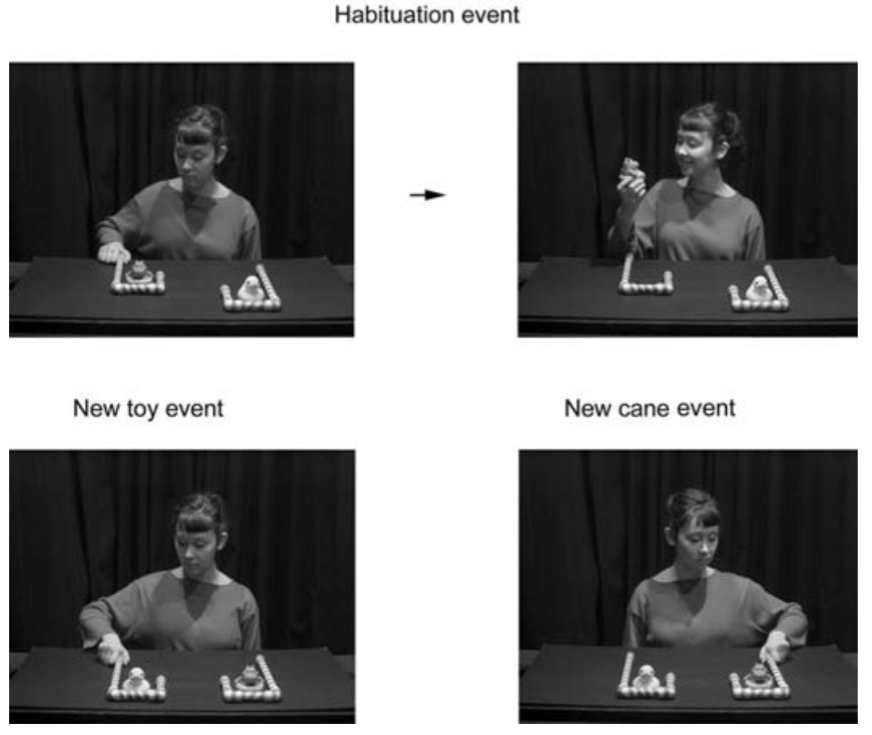
Sommerville et al 2008, figure 1
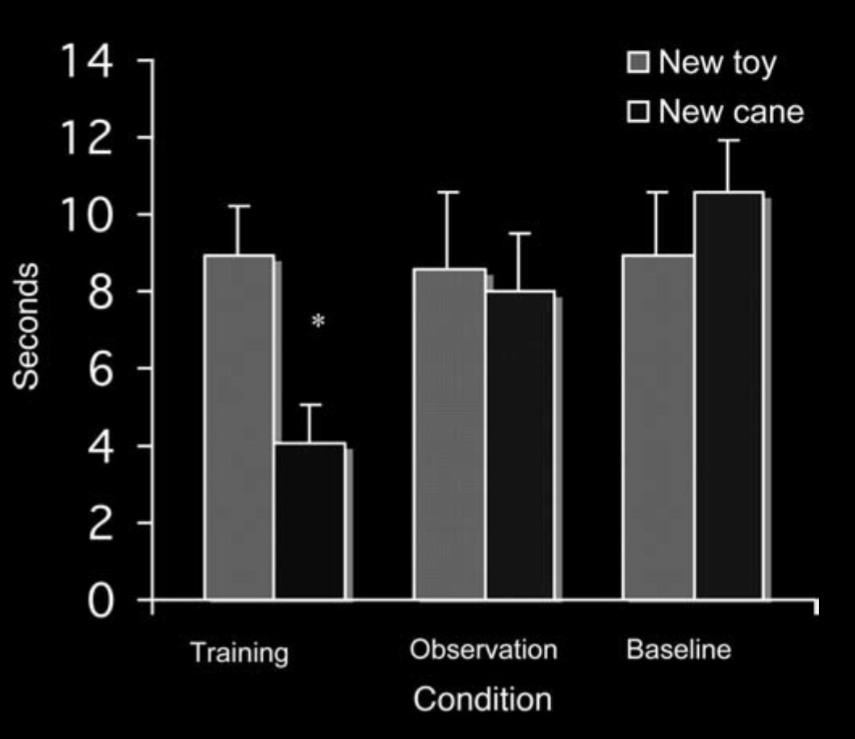
Sommerville et al 2008, figure 2
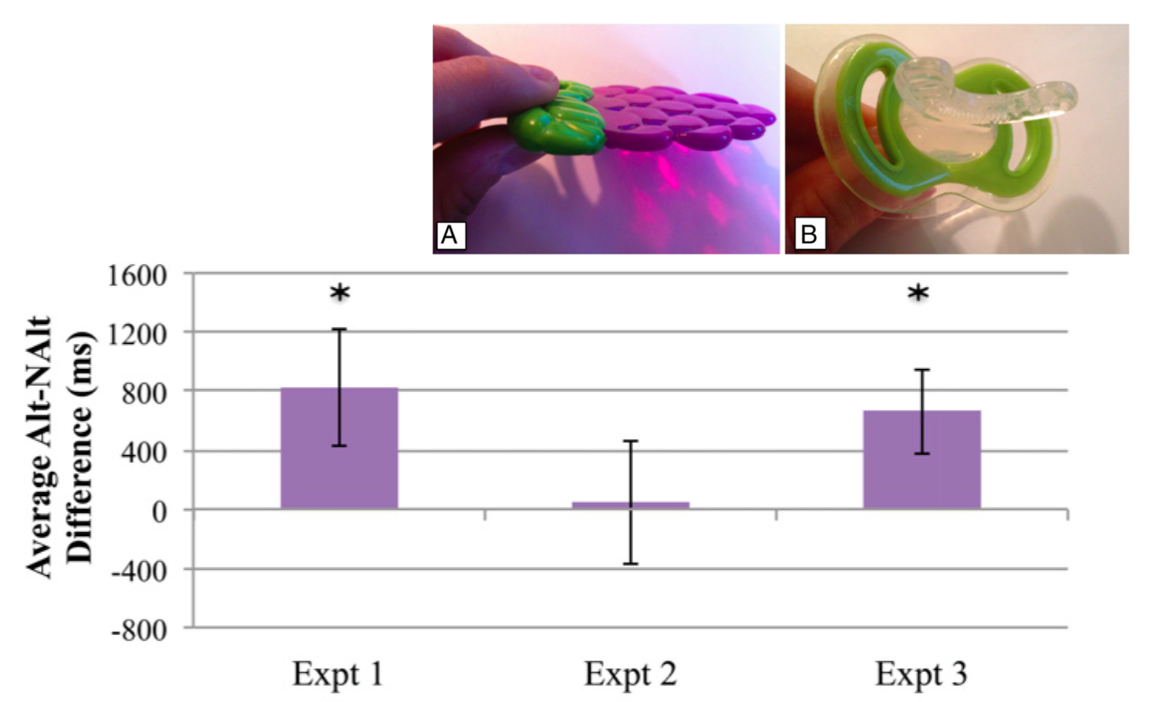
Bruderer et al, 2015 figures 1, 4
limit:
infants in their first nine months of life
can only track the goals of an action
if they can perform a similar enough action
around the time the action occurs.
Why?
In infants (and adults),
goal-tracking is limited by their abilities to act.
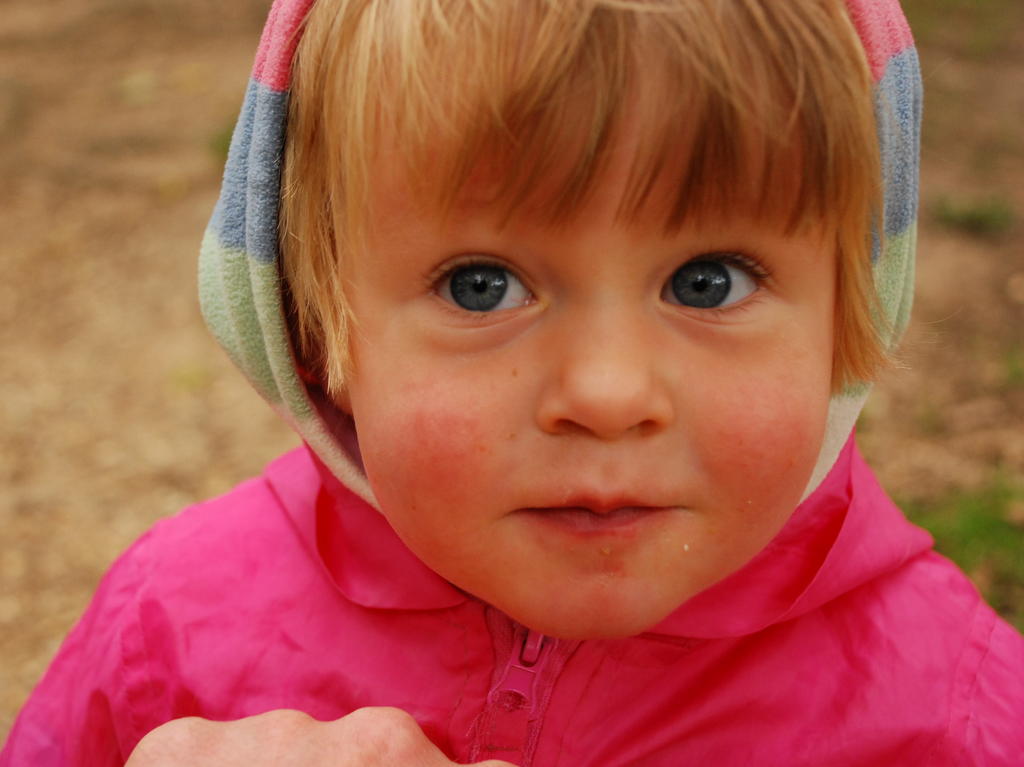
The Motor Theory of Goal Tracking
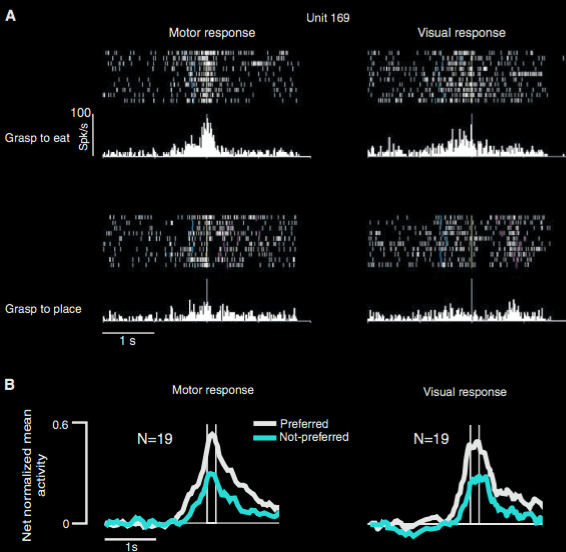
Fogassi et al 2005, figure 5
The Double Life of Motor Representation
What are those motor representations doing here?
Motor Theory of Goal Tracking (including Speech Perception)
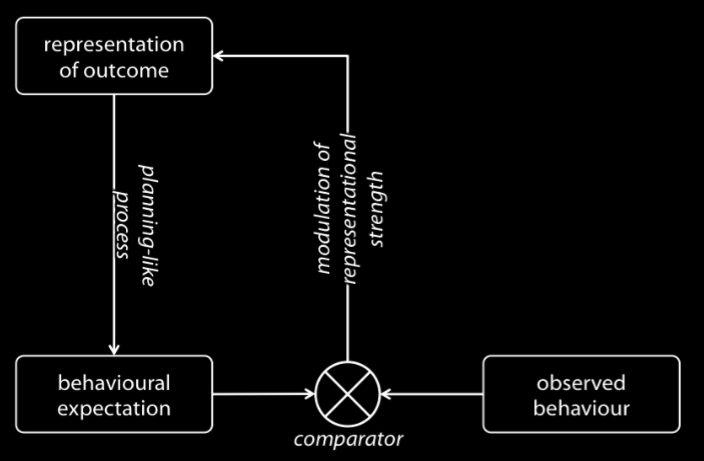
Sinigalia & Butterfill 2015, figure 1
Pure goal-tracking could,
in principle,
be implemented motorically.
Motor Conjecture
In 9-month-olds,
all pure goal-tracking is explained by the Motor Theory;
---
‘we believe that the three proposed mechanisms of goal attribution [...] complement each other’
Csibra & Gergely, 2007 p. 74
How?
Infants can track goals from nine months of age (or earlier).
Why?
In infants (and adults),
goal-tracking is limited by their abilities to act.
The ‘Teleological Stance’
~ The goals of an action are those outcomes which the means is a best available way of bringing about.
Csibra & Gergely
Tracking
1. This means, m, has been adopted (observation)
2. G is an outcome such that: m is a best available* way of bringing G about
3. ∴ G is a goal of the observed action
‘simulation is clearly a natural and effective way to find the most efficient action towards a goal state.’
Csibra & Gergely, 2007 p. 72
| The Simple View | Motor Conjecture | |
| What is the function to be computed? | [Teleological Stance] | [Teleological Stance] |
| How is this function computed? | By reasoning from beliefs. | By using motor processes ‘in reverse’. |
| Why is goal-tracking limited by action ability? | ??? | Because both rely on motor processes. |
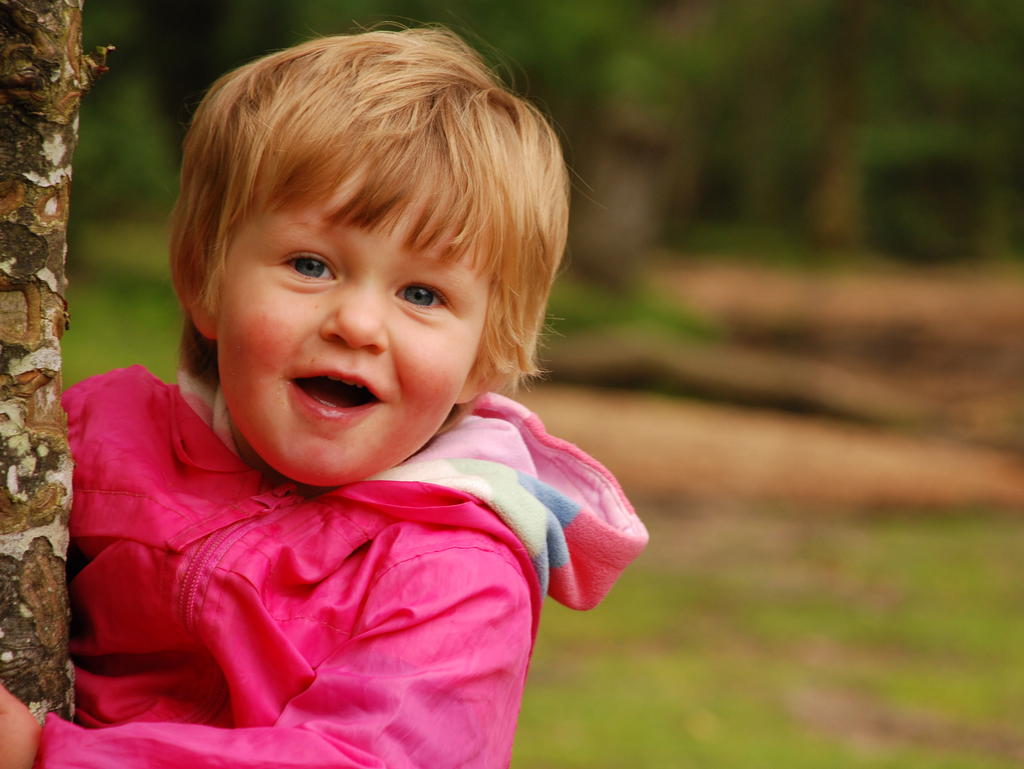
A Puzzle About Goal Tracking

Kanakogi and Itakura, 2011 figure 1C (part)
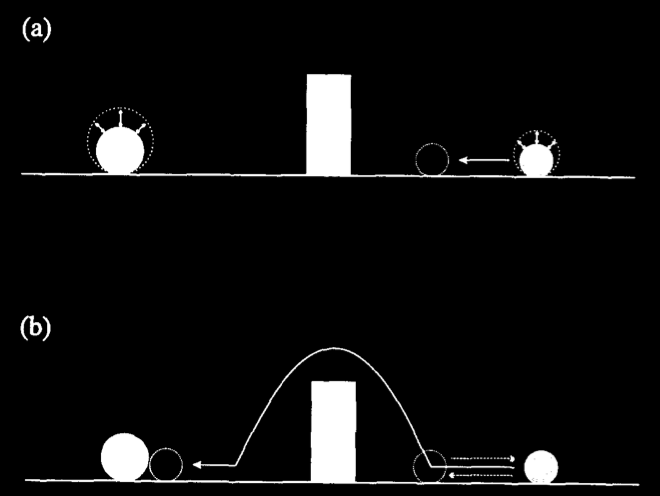
Gergely et al 1995, figure 1
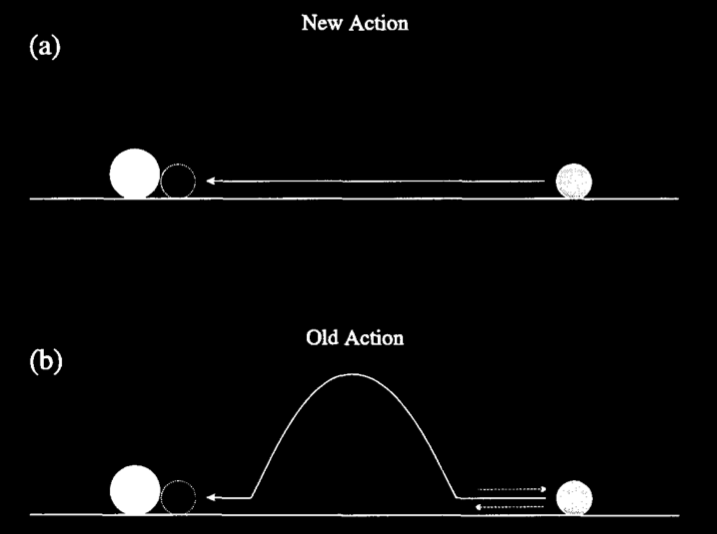
Gergely et al 1995, figure 3
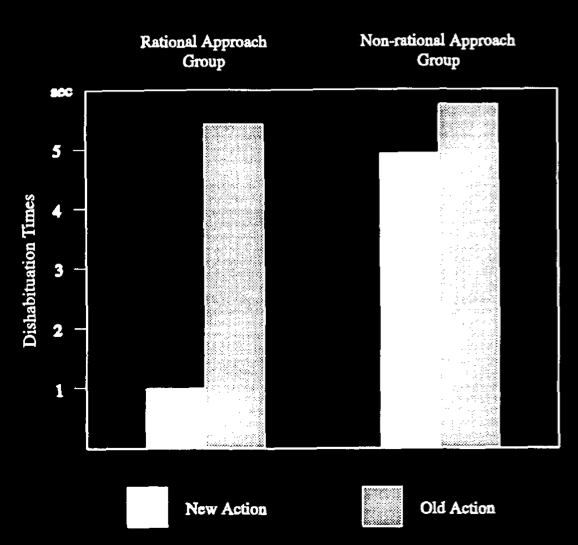
Gergely et al 1995, figure 5
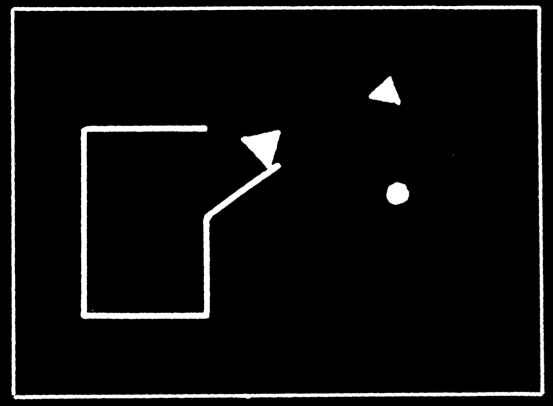
Heider and Simmel, figure 1


Csibra et al 2003, figure 6
Puzzle
In infants under 10 months,
it appears that
some,
but not all,
goal-tracking is limited by their abilities to act.
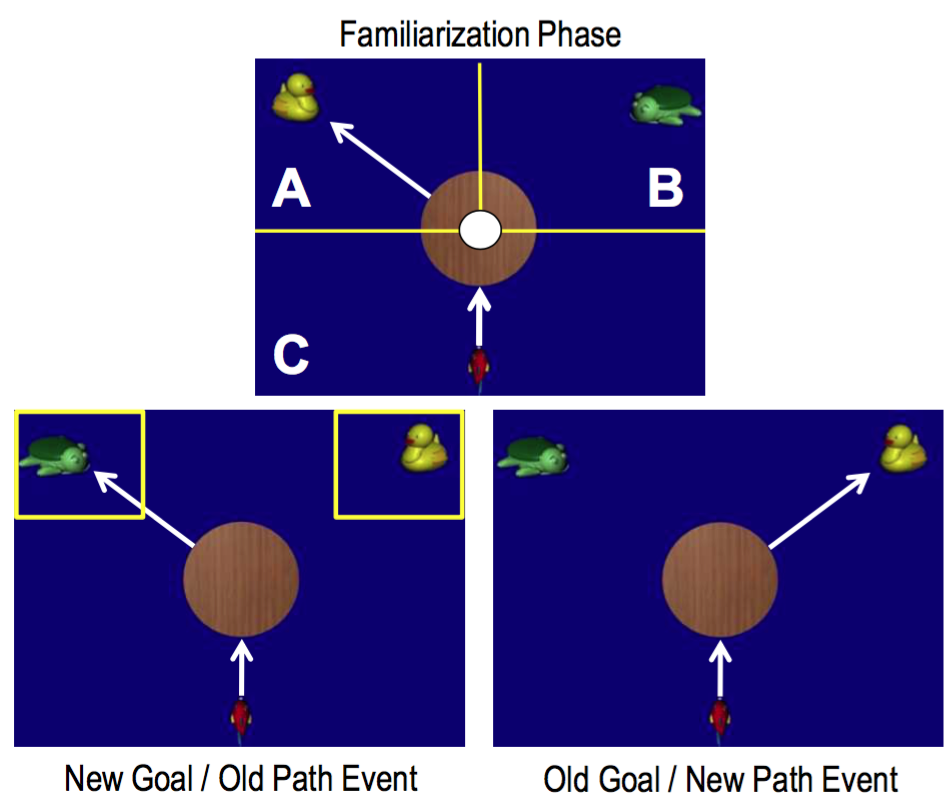
Daum et al, 2012 figure 1
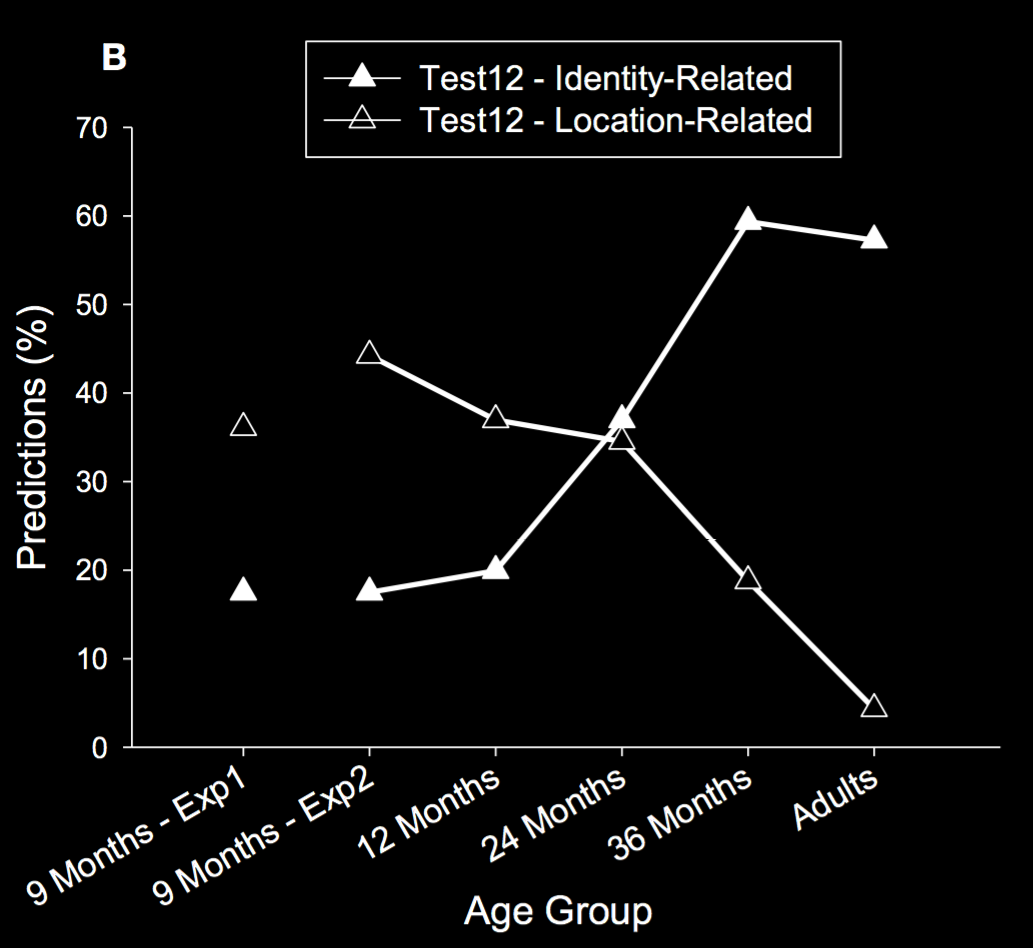
Daum et al, 2012 figure 2
Puzzles
In infants under 10 months,
it appears that
some,
but not all,
goal-tracking is limited by their abilities to act ...
... and that goal-tracking sometimes manifests in dishabitution or pupil dilation but not proactive gaze.

Perceptual Animacy
Perceptual Animacy

Gao et al, 2009 figure 2

Gao et al, 2009 figure 3b
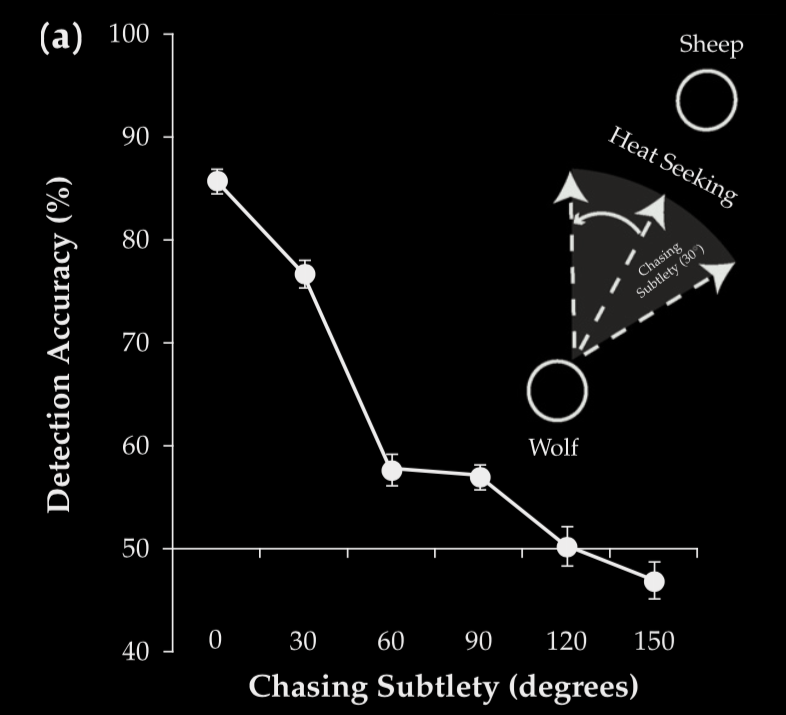
Gao et al, 2009 figures 3b, 4a
| pure goal-tracking | perceptual animacy | |
| What is tracked? | actions & goals | animate objects & targets |
| Computational description? | Teleological Stance | spatio-temporal heuristics (e.g. subtlety, directionality) |
| Processes & representations? | motoric | perceptual |
Motor Conjecture Revised
In 9-month-olds,
all pure goal-tracking is explained by the Motor Theory;
appearances that goal-tracking is not limited by their abilities to act are due to perceptual animacy.
Predictions
Where 9-month-olds appear to be tracking goals
in ways not limited by their abilities to act,
they will be subject to signature limits of perceptual animacy
(e.g. subtlety, directionality);
and the processes underlying their abilities will be broadly perceptual.
Puzzles
In infants under 10 months,
it appears that
some,
but not all,
goal-tracking is limited by their abilities to act ...
... and that goal-tracking sometimes manifests in dishabitution or pupil dilation but not proactive gaze.
objection


Gao et al, 2009 figure 3b; Csibra et al 2003, figure 6

further complication: associative learning for sequencing
Gredebäck & Melinder, 2010
conclusions
Puzzles
In infants under 10 months,
it appears that
some,
but not all,
goal-tracking is limited by their abilities to act ...
... and that goal-tracking sometimes manifests in dishabitution or pupil dilation but not proactive gaze.
Motor Conjecture Revised
In 9-month-olds,
all pure goal-tracking is explained by the Motor Theory;
appearances that goal-tracking is not limited by their abilities to act are due to perceptual animacy.
What do infants understanding of goal-directed actions?
They can track goals from around 3 months of age,
but this does not imply knowledge of action
because infants’ abilities, like adults’, involve motor processes (and perhaps associative learning too).
